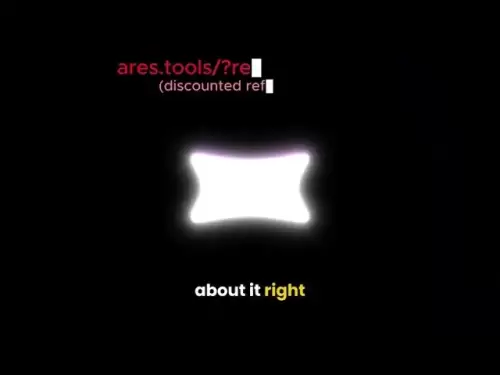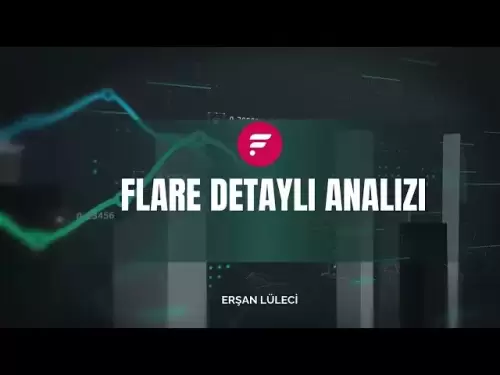 |
|
 |
|
 |
|
 |
|
 |
|
 |
|
 |
|
 |
|
 |
|
 |
|
 |
|
 |
|
 |
|
 |
|
 |
|
上個月,我再次試圖讓一個非晶體貨幣朋友開始。在教程中十分鐘的時間裡,她在談論“選擇錢包”和“現在您需要在另一個代幣中為汽油付費”時開始徘徊。

Last month, I once again tried to get a non-cryptocurrency friend started. Ten minutes into the tutorial, her eyes started to wander as she was talking about "choosing a wallet" and "now you need to pay for gas in another token."
上個月,我再次試圖讓一個非晶體貨幣朋友開始。在教程中十分鐘的時間裡,她在談論“選擇錢包”和“現在您需要在另一個代幣中為汽油付費”時開始徘徊。
It suddenly dawned on me: What we’re facing is not a knowledge gap, but a design gap.
它突然降臨在我身上:我們面臨的不是知識差距,而是設計差距。
The harsh reality is that the speculative wave brought in the first wave of users, but it won’t attract the next billion. Real adoption begins when cryptocurrency products become invisible — people can benefit from them without realizing they are using cryptocurrency technology.
苛刻的現實是,投機浪潮帶來了第一波用戶,但不會吸引下十億美元。當加密貨幣產品變得不可見時,實際採用就開始了 - 人們可以從它們中受益而不會意識到他們正在使用加密貨幣技術。
From the rise of stablecoins and institutional staking to the growing role of AI in the development of the digital economy, the foundation for the large-scale application of cryptocurrencies has been laid. But to open up such a future, we must stop requiring users to learn about cryptocurrencies and start building crypto products that allow them to be unaware of the underlying technology.
從穩定幣和機構的興起的興起到AI在數字經濟發展中的不斷增長的作用,已經奠定了大規模應用加密貨幣的基礎。但是,要開放這樣的未來,我們必須停止要求用戶了解加密貨幣並開始構建加密產品,從而使他們不知道基礎技術。
Here are eight narratives and projects worth watching in the cryptocurrency application space.
以下是在加密貨幣應用領域中值得一看的八個敘述和項目。
Currently, wallets are in a stage of structural transformation: users are forming the habit of using two complementary wallets - one is a wallet for daily use, similar to a fintech app, and the other is a "vault wallet" for asset storage, similar to a bank account.
目前,錢包正處於結構轉換的階段:用戶正在形成使用兩個補充錢包的習慣 - 一個是每天使用的錢包,類似於金融科技應用程序,另一個是用於資產存儲的“金庫錢包”,類似於銀行帳戶。
Wallet functionality and experience are diverging. As a result, developers who try to cram all functionality into a single interface will ultimately lose out to developers who focus on (a) frictionless onboarding and (b) high-security storage.
錢包功能和經驗有所不同。結果,試圖將所有功能填充到單個接口中的開發人員最終將失去關注(a)無摩擦入職和(b)高安全性存儲的開發人員。
Data shows that most users now use 2-5 wallets, with nearly 48% of respondents saying this is because each blockchain is still isolated in its own "walled garden".
數據顯示,現在大多數用戶使用2-5個錢包,近48%的受訪者說這是因為每個區塊鏈仍在自己的“圍牆花園”中隔離。
At the same time, there is a top concentration of wallets. Senior users (with more than 2 years of experience) are concentrated on Binance, Coinbase, MetaMask or Trust (accounting for more than 54%), while the share of any single wallet in the novice group is less than 20%.
同時,有頂部的錢包。高級用戶(擁有超過2年的經驗)集中在二元,二線,元彌鍊或信託(佔54%以上),而新手組中任何單個錢包的份額均低於20%。
In addition, for most users, self-custody is still daunting. An interesting data is that Binance's self-custody solution "Binance Web3 Wallet" has only attracted 22% of users despite providing a familiar brand and a simplified self-custody path, and most users still have concerns.
此外,對於大多數用戶而言,自我顧客仍然令人生畏。一個有趣的數據是,儘管提供了一個熟悉的品牌和簡化的自我觀察路徑,但Binance的自我客戶解決方案“ Binance Web3 Wallet”僅吸引了22%的用戶,並且大多數用戶仍然有擔憂。
In reality, users don’t want to use multiple wallets at the same time. This is not their subjective preference, but they have no choice.
實際上,用戶不想同時使用多個錢包。這不是他們的主觀偏好,但他們別無選擇。
Obviously, the "seamless multi-chain future" that the industry has been talking about has not really arrived. In addition to 48% of users having multiple wallets mainly to access different blockchain ecosystems, 44% of users actively split their wallets for security reasons, which is a significant increase from 33% last year.
顯然,該行業一直在談論的“無縫多鏈未來”並沒有真正到來。除了有48%的用戶有多個錢包主要用於訪問不同的區塊鏈生態系統外,出於安全原因,有44%的用戶會積極分配錢包,這比去年的33%顯著增加。
It can be seen that the industry has failed to provide true interoperability, thus shifting operational complexity to end users. At the same time, these users are becoming smarter and smarter - they no longer blindly believe that one wallet can handle all scenarios.
可以看出,該行業未能提供真正的互操作性,從而將運營複雜性轉移到最終用戶。同時,這些用戶變得更加智能 - 他們不再盲目地相信一個錢包可以處理所有情況。
Project Examples
項目示例
Phantom: A popular cryptocurrency wallet that supports Solana and Ethereum.
Phantom:支持Solana和以太坊的流行加密貨幣錢包。
The divergence between behavior and belief
行為與信念之間的差異
Speculation remains the core driver. Although 54% of users actually used cryptocurrencies for payments or peer-to-peer transfers in the past quarter, when asked what their favorite activity was, only 12% of respondents chose payment. Speculation (spot, MeMe coins, DeFi activities) is still the most frequent behavior every week, covering almost all user types. Therefore, speculation will continue to plunder the future attention share of cryptocurrency payments as a utility.
猜測仍然是核心驅動力。儘管54%的用戶實際上在過去季度使用加密貨幣進行付款或點對點轉移,但是當被問及他們最喜歡的活動是什麼時,只有12%的受訪者選擇付款。猜測(現場,模因硬幣,DEFI活動)仍然是每週最常見的行為,幾乎涵蓋了幾乎所有用戶類型。因此,猜測將繼續掠奪加密貨幣付款作為公用事業的未來關注份額。
The core reasons that hinder the development of practical scenarios are three major obstacles:
阻礙實際情況發展的核心原因是三個主要障礙:
Project Examples
項目示例
The chain is a new infrastructure layer, but users don’t need to be aware of its existence
該鍊是一個新的基礎架構層,但是用戶不需要意識到它的存在
The essence of a multi-chain ecosystem is a system of division of labor. Chain abstraction will become the winning user experience (UX) model, and wallet sessions can smoothly route orders, balances, and identities to any backend that provides the best combination of latency, cost, and security without requiring users to make a choice.
多鏈生態系統的本質是勞動分工系統。連鎖抽象將成為獲勝的用戶體驗(UX)模型,錢包會議可以順利進行訂單,平衡和身份,以提供任何可提供延遲,成本和安全性最佳組合的後端,而無需用戶做出選擇。
Currently, Ethereum remains the institutional-grade settlement layer, but Solana is quickly becoming the chain of choice for high-frequency, high-engagement retail activities. From a momentum and growth perspective, Ethereum faces the strongest competitive pressure to date:
目前,以太坊仍然是機構級定居層,但Solana迅速成為高頻,高級零售活動的首選鏈。從動力和增長的角度來看,以太坊面臨著迄今為止最大的競爭壓力:
The survey shows that 43% of respondents said Ethereum is their most commonly used chain; 39% of respondents said it is Solana; only 10% of respondents mainly use L2, which shows that interoperability is still in the theoretical stage rather than the practical stage.
調查顯示,有43%的受訪者表示以太坊是他們最常用的鏈。 39%的受訪者表示是索拉納。只有10%的受訪者主要使用L2,這表明互操作性仍處於理論階段,而不是實際階段。
Project Examples
項目示例
The illusion of increased security
安全性增加的幻想
Users claim to feel more secure on-chain, but their wallets tell a different story.
用戶聲稱自己的鍊子更安全,但是他們的錢包講了一個不同的故事。
So, how do we explain this paradox?
那麼,我們如何解釋這個悖論?
In fact, users confuse personal enhancements (
實際上,用戶會混淆個人增強功能(
免責聲明:info@kdj.com
所提供的資訊並非交易建議。 kDJ.com對任何基於本文提供的資訊進行的投資不承擔任何責任。加密貨幣波動性較大,建議您充分研究後謹慎投資!
如果您認為本網站使用的內容侵犯了您的版權,請立即聯絡我們(info@kdj.com),我們將及時刪除。
-

- PI硬幣,錢包特徵和二十個Coinbase:什麼是嗡嗡聲?
- 2025-07-26 18:01:37
- 探索Pi Coin中的最新發展,其錢包的潛在共插基式特徵以及Coinbase的Shib運動的含義。
-

-

- 定罪,司法系統和謀殺:查看最近的案件和轉變觀點
- 2025-07-26 18:00:19
- 根據新的證據,法規和歷史背景來探索信念的複雜性。從加密到犯罪,正義面臨審查。
-

- Dogecoin軌跡:從模因到主流及以後的加密貨幣
- 2025-07-26 16:00:05
- 探索Dogecoin的旅程,目前在加密清算中的鬥爭,以及在不斷發展的加密景觀中進行未來牛的潛力。
-

-

- 長/短:像專業人士一樣騎shiba inu波浪
- 2025-07-26 15:52:02
- 解碼SHIB的價格行動:掌握什葉派INU市場中長期和短職位的藝術,以獲得最大的利潤。
-

-

- 蛋糕價格激增:pancakeswap的看漲勢頭分析了
- 2025-07-26 15:39:43
- 蛋糕的價格顯示了看漲的勢頭,因為煎餅眼鑰匙阻力水平。探索了技術分析和市場見解。
-

- AAVE價格檢查:$ 50B TVL Party vs.看跌嗡嗡聲
- 2025-07-26 15:39:08
- 艾夫(Aave)達到了TVL里程碑,但看跌信號卻拋出了陰影。是時候買,出售還是放鬆了?




























































